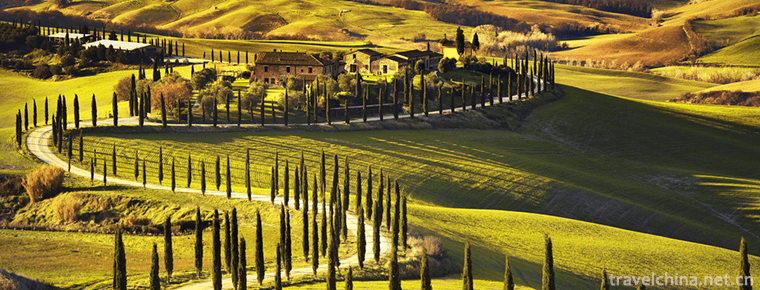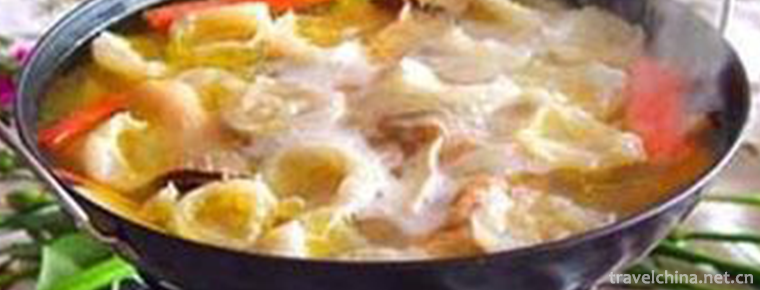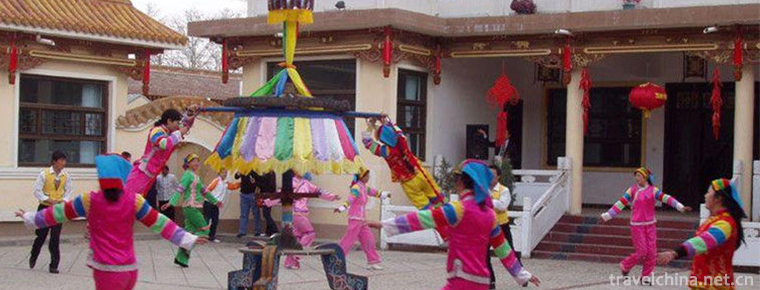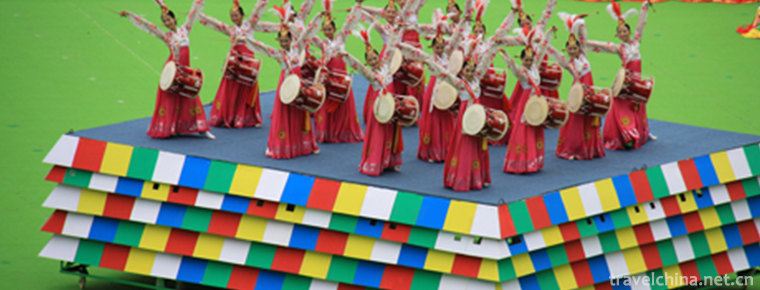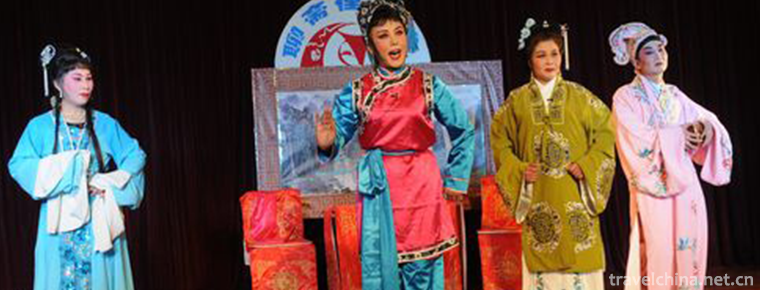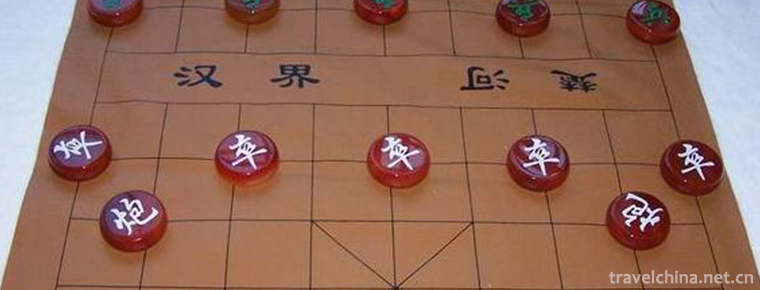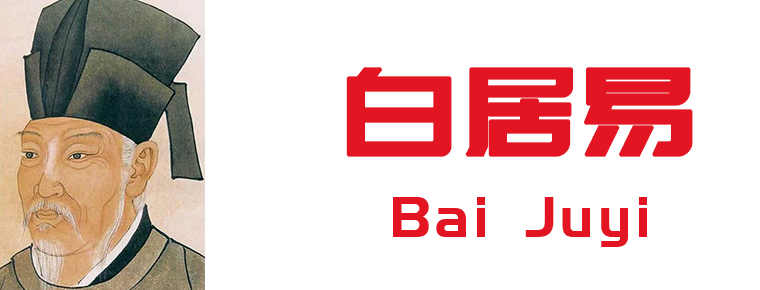Construction Techniques of Tujia Diaojiao Building
Construction Techniques of Tujia Diaojiao Building
Tujia hanging-feet building construction skills, Hubei Xianfeng County, Hunan Yongshun County, Chongqing Shizhu Tujia Autonomous County, local traditional skills, one of the national intangible cultural heritage.
The hanging-feet building is on the flat ground. The hanging-feet half building is built on the sloping hillside. The back half is landed on the rock. The front half is supported by wooden pillars. The building is built with local lumber. The slopes are divided into two levels of roofs, with long columns at the lower level and short columns at the upper level, so that the front half floor is parallel to the rear half floor, forming a half-side building. The wooden columns, wooden walls and wooden floors are all built on stone shelters several meters high, and the elevation of the roof is 6-7 meters. The outermost column of each row is cut from top to bottom at the top of the roof foundation to form a suspension pole, hence the name "suspension pole building".
On May 23, 2011, Tujia Diaojiao Building construction technology was approved by the State Council and listed in the third batch of national intangible cultural heritage list, heritage number: _-211.
historical origin
Xianfeng Diaojiao Building
Before the Spring and Autumn Period and the Warring States Period, in order to avoid the harm of wild animals, Xianfeng Tujia ancestors built original "tree houses" on trees with vines and branches and leaves. This "tree house" is the most primitive hanging-feet building.
During the Warring States Period, Xianfeng area belonged to the territory of the State of Chu, which was deeply influenced by Jingchu culture and followed the Ganlan system of the State of Chu. The form of Tujia's hanging-feet building began to develop.
In the Yuan Dynasty, the Tujia people in Xianfeng County continued the popular barricade architecture in the south, and absorbed the well courtyard architecture of the Han nationality. Therefore, it constitutes a well-courtyard wooden suspension tower.
During the Ming and Qing Dynasties, the Tujia suspension tower in Xianfeng County reached its peak. Especially the decorative art of the local Tujia noble suspension tower was beautifully decorated on the silk eaves, railings, pillar foundations, doors and windows.
During the period of the Republic of China, the wealthy families of Tujia nationality in Xianfeng County had been quite fastidious, and building luxury houses was no longer the privilege of the powerful. Ordinary civilians can also build wooden tile pylons. Its roof is often decorated with "pin" tiles.
Since the founding of the People's Republic of China, apart from a few Tujia people who have retained their traditional forms of residence, most of them have built brick-and-concrete houses.
Yongshun hanging tower
The construction of Tujia Diaojiao Building in Yongshun County of Hunan Province originated from the Spring and Autumn Period and the Warring States Period and flourished in the Tang and Song Dynasties. After the Peng regime ruled western Hunan, the corner tower began to develop in an all-round way.
During the reign of Yongzheng in the Qing Dynasty, the ban on beams, columns and roofing tiles was lifted, and corner buildings were widely distributed.
After the founding of New China, people's living conditions have developed greatly, and the construction skills of the corner building have reached its peak.
Stone pillar hanging tower
Chongqing Stone Pillar Suspension Tower has a long history. It can be traced back to the Eastern Han Dynasty at the earliest time. Most of it was built from the Southern Song Dynasty to the 1930s and 1940s.
In the late Spring and Autumn Period and the Warring States Period, Chu people moved to Sichuan in large numbers. Influenced by Chu culture, Chongqing suspended foot building appeared the style of "layers of terraces" and "heavy roof dwelling". The roof cover also changed, not only bamboo straw, but also slabs and tubular tiles burned with mud to cover the roof.
In the late Yuan Dynasty, a large number of Jingchu immigrants entered Chongqing again. The integration of population and culture between Ba and Chu has promoted the development of local society and economy, and has exerted a great influence on the use and prosperity of Chongqing's hanging-feet building.
During the Ming Dynasty in Tianshun, Chongqing had the largest population in the southwest, and its urban area was expanding day by day. Especially along the Yangtze River, commercial houses were in a row, breaking through the restrictions of the city wall, forming the city scale of eight square buildings and two adjacent rooms outside the city. Most of the residential buildings inside and outside the city were suspended feet buildings. "In the west of Baidi City, Kuizhou Prefecture City, the castles and ladders of the family's houses, the winter snow falls to the ground, and the trees are aligned in spring and aquatic life." This is the scene of Chongqing Fengjie Suspended Tower described by Yang Shen, a poet of the Ming Dynasty, in the Song of Bamboo Branches. It vividly depicts the scale and beauty of Fengjie Suspended Tower in the Ming Dynasty.
major schools
In the craftsmanship of Tujia's hanging-feet building in Xianfeng County, Hubei Province, a large number of folk customs such as "watching geomantic omen", "worshipping mountain gods", "sacrificing Lu", "chopping beams" and "saying blessings" have appeared in the construction of hanging-feet building, which fully demonstrates Tujia's strong local customs and folklores, as well as the patterns on the fences, doors and windows, pillar foundations and choosing sides, all vividly demonstrating the abundance of Xianfeng Tujia's area. Thick cultural connotations.
There are various forms of Tujia foot-suspension building in Yongshun County, Hunan Province, including single-hanging corner building, double-hanging corner building, four-way water corner building, etc. It has the architectural characteristics of no canal, no melon, no fun and no turning into a building. The structure is unique and the form is lively.
Chongqing Shizhu Tujia Diaojiao Tower is widely distributed, especially in Qiqishan Mountains, Fangdou Mountains and Valley Old Street. It is also called "Ganlan", "Qianzhu Landing" or "Turning Corner Tower" locally. It is a wonderful flower of the national architectural technology and an excellent cultural heritage of the Tujia nationality.
Inheritance and Protection
Inheritance value
With the development of Tujia's history, the construction technique of Xianfeng Diaojiao Building in Hubei Province has gradually enriched and matured. It witnesses the development history of Tujia and embodies the wisdom and wisdom of Tujia people. It is a very precious national cultural heritage and should be effectively protected and well inherited.
The construction technique of Tujia Diaojiao Building (also known as "corner tower") in Yongshun County, Hunan Province is a traditional handicraft with national characteristics created by Tujia people in long-term social life. It is called "living fossil" of ancient architecture by experts and scholars. It is a precious crystallization of folk art that integrates architecture, painting and sculpture. It is also a representative in the history of Chinese architectural art.
The Tujia people in Shizhu, Chongqing, are the great creations of the ancestors of the Ba people in Chongqing. They are the representatives of the folk houses in Bayu, and they are also local buildings with local characteristics. Suspended tower is a kind of building form suitable for mountainous and hilly areas, which embodies the wisdom and skills of human beings in getting along with nature.
Current situation of inheritance
With the acceleration of social process, the hanging-feet building is gradually replaced by modern architecture, and the inheritance area and inheritors are seriously shrinking. At present, this traditional building is only distributed in a few towns such as Zejia, Shidi, Cheping, Pebble Sand and Furong in Yongshun County, with fewer inheritors and few successors.
With the development of society and the change of people's living concept, as well as the transformation of Chongqing's old city, the continuation of Chongqing's hanging-feet building's architectural skills and culture and physical protection are facing extremely severe challenges.
Heritage figures
Wan Taoyuan, the representative successor of the fourth batch of state-level intangible cultural heritage projects, declared in Xianfeng County, Enshi Tujia and Miao Autonomous Prefecture, Hubei Province, declared the project: Tujia hanging tower construction skills.
Peng Shanyao, the representative successor of the fourth batch of national intangible cultural heritage projects, declared Yongshun County, Xiangxi Tujia and Miao Autonomous Prefecture of Hunan Province, declared the project: Tujia hanging tower construction skills.
Liu Chengbai, the representative successor of the fifth batch of state-level intangible cultural heritage projects, declared in Shizhu Tujia Autonomous County of Chongqing, declaring the project: Tujia hanging tower construction skills.
protective measures
Chongqing Shizhu Tujia Autonomous County has set up a special protection project team, established the information files of folk artists and the base of inheritance of skills in the construction of stone-pillar Tujia hanging-feet building, recorded and preserved the process of building skills in detail, and made more people understand it by organizing observation training and holding skills competitions. Tujia culture.
On December 26, 2018, the construction techniques of Tujia hanging-feet building in Xianfeng County, Hubei Province were listed in the First Catalogue of Revitalization of Traditional Crafts in Hubei Province.
Xianfeng County of Hubei Province has formulated the twelfth and thirteenth five-year protection plans for the construction technology protection of Tujia hanging-feet building, and promulgated corresponding protection measures to protect it.
social influence
Honorary recognition
The Tujia Diaojiao Building Construction Technology Protection and Inheritance Action was awarded the honorary title of "Ten Best Non-Heritage Protection Action in Hubei Province in 2015" by the Provincial Cultural Department.
Important Display
From Dec. 20 to Dec. 29, 2013, Ran Longhai, the inheritor of craftsmanship in Chongqing Shizhu Tujia Autonomous County, built a model of Tujia Suspended Tower, which appeared in the "2013 China Minority intangible cultural heritage exhibition week".
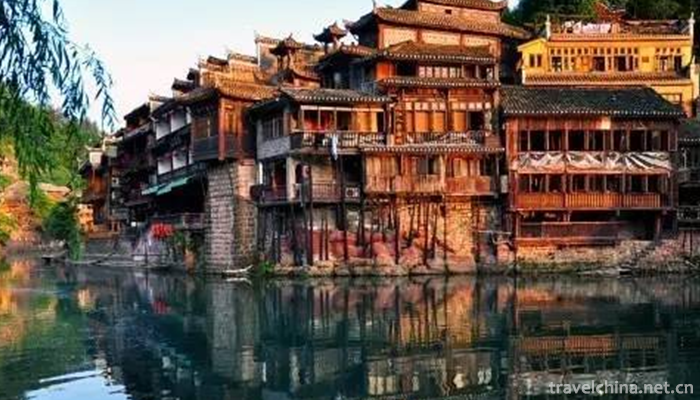
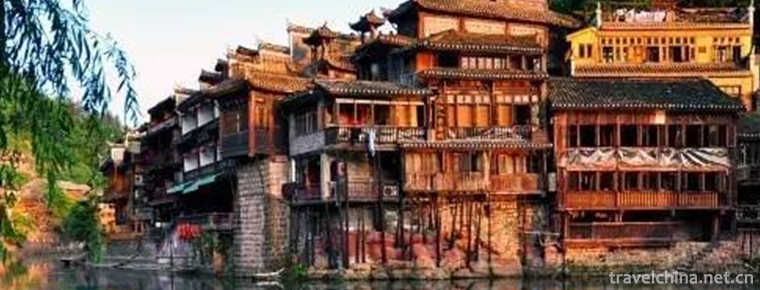
Construction Techniques of Tujia Diaojiao Building
-
The AncientCity of Ping Yao
The AncientCity of Ping Yao is located in Pingyao County, central Shanxi Province. It was founded in Xuanwang Period of Western Zhou Dynasty (827-782 BC).
Views: 332 Time 2018-11-24 -
Taining Scenic Tourist Area
Taining Scenic Spot: World Geopark, National AAAAA Class Tourist Spot, National Key Scenic Spot, National Forest Park, National Geopark, National Key Cultural Relics Protection Unit
Views: 220 Time 2018-12-08 -
Bashang grassland
Bashang grassland, also known as the first grassland in the north of Beijing, is located in Hebei Province. It refers to the meadow grassland formed by the steep rise of grassland and the reasons of c
Views: 155 Time 2019-01-02 -
Kunyu Mountain National Forest Park
Kunyushan National Forest Park is located in Mouping District, Yantai City, Shandong Province. It covers an area of 48 square kilometers and belongs to warm temperate monsoon
Views: 317 Time 2019-01-29 -
Fish Swallow in Bazhen Fresh Soup
Ingredients: Six or two fish swallows are served well. Lentinus edodes, crab willow, Jinhua ham, clam, shrimp
Views: 223 Time 2019-03-27 -
Yasuaki
Anzhao is an ancient Tu dance. It's popular with mutual aid. When celebrating festivals, harvest celebrations and weddings, people gather in the courtyard or on the wheat threshing ground to dance the
Views: 208 Time 2019-04-02 -
Korean Chief Inspiration
Long drum dance, also known as "stick drum dance", is a dance often danced by Chinese Korean people for self-entertainment and entertainment. Long drums have two sides
Views: 155 Time 2019-04-16 -
Liao Zhais folk songs
The spreading area of Liaozhai slang mainly distributes in Zibo City, Shandong Province. The Pu family and its descendants are the main inheritors. Liaozhai slang is a unique traditional folk music li
Views: 218 Time 2019-05-13 -
Chess Xiangqi
Chess, also known as "Chess", Chinese chess (English name Chinese chess), Chinese traditional chess puzzle game, has a long history in China, belongs to a two-person confrontational game, be
Views: 183 Time 2019-07-06 -
Bai Juyi
Bai Juyi (772 - to - 6), Le Tian, the number of Xiangshan residence, and Mr. drunken Yin, whose ancestral home is Taiyuan, Shanxi. And moved to his great grandfather. Lower jaw Born in Henan Xinzheng
Views: 307 Time 2019-09-06 -
Guangan primary industry
In 2019, the sown area of grain in Guang'an City is 287000 hectares, and the total grain output is 1.8 million tons, an increase of 1000 tons or 0.04%. Among them, the rice output was 1.047 million tons, down 0.4%; the corn output was 448000 tons, an incre
Views: 186 Time 2020-12-19 -
Dazhous tertiary industry
In 2019, the total retail sales of social consumer goods in Dazhou city will reach 98.794 billion yuan, an increase of 11.0%, 0.6 percentage points higher than that of the whole province, ranking the fourth in the province. From the regional perspectiv
Views: 197 Time 2020-12-20


